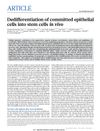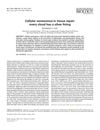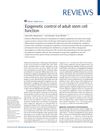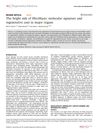The Senescence–Stemness Alliance: A Cancer-Hijacked Regeneration Principle
September 2018
in “
Trends in Cell Biology
”
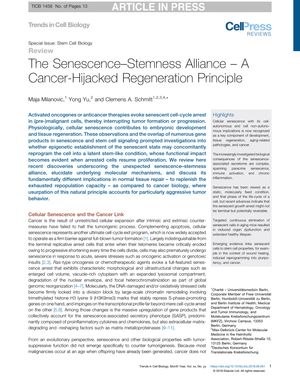
TLDR Cancer can hijack the body's cell repair system to promote tumor growth, and targeting this process may improve cancer treatments.
The review from December 2018 explores the dual role of cellular senescence in normal physiological processes and cancer biology. It describes how senescence, characterized by cell-cycle arrest and a secretory phenotype, can contribute to tissue repair by replenishing stem cell populations but can also be exploited by cancer cells to promote tumor growth. The review discusses the potential reversibility of the senescent state and its reprogramming into a stem-like condition, which has implications for cancer therapy development. Additionally, a study is mentioned where Bcl2-protected Suv39h1-deficient mouse lymphoma cells entered therapy-induced senescence (TIS) in response to treatment but could resume proliferation, showing a loss of senescence markers and an increase in stemness, leading to enhanced tumor-initiating potential. The document also highlights strategies to target senescent cells, such as Wnt inhibition and senolysis, which could reduce clonogenicity and improve survival in mice. The importance of understanding the role of senescence in cancer progression and developing therapeutic strategies that inhibit detrimental pathways while eliminating senescent cells is emphasized.
